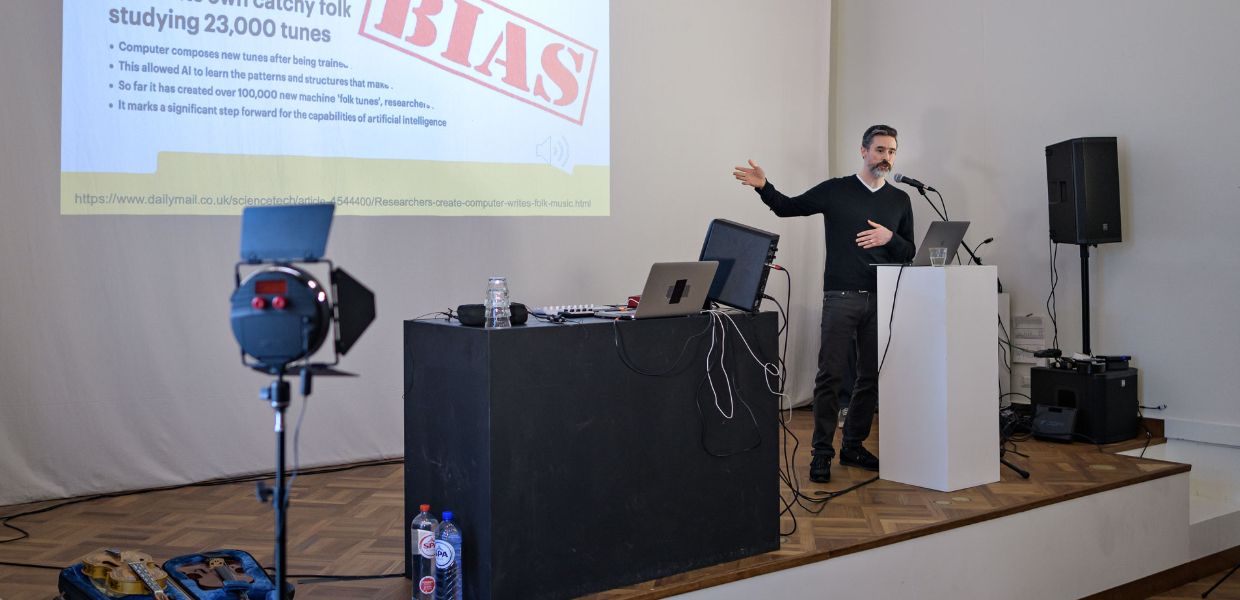Artistic vision and artificial intelligence
In my five and a half years in the cultural heritage R&D sector and electronic music world at Sound and Vision, I’ve had the privilege of living a dual life. With feet on both sides of the river, I work to bridge the heritage and academic sectors via Europe’s overwhelmingly thriving electronic music community.
RE:VIVE is an initiative that facilitates the reuse of heritage material by the electronic music community. EuropeanaTech is Europeana’s R&D community, a long-running and active community that fuels technical experiments, development and the international interoperability of standards and tools.
To some, these two worlds may seem like an odd couple but in reality, both need one another if we hope to really push the limits of technology, creativity, access and story-telling. That’s why I was inspired to organise the Instrumental Shifts Symposium at Rewire Festival. To be a matchmaker and open the doors for both parties. It’s an opportunity to show off research and tools related to AI and music juxtaposed with artists putting some of this research into practice with the adage ‘let’s work together’.
The added value you see through academic and creative collaboration is that artists can valorise, disseminate and humanise the computationally intensive and meticulous R&D work being done by universities or other knowledge institutes. That’s not to say artists can’t do heavy computing or that universities can’t be artistic but when one hand washes the other we can generate a stream of specialised knowledge transfer and experiential expertise.
During the genesis of what we now call electronic music, those forging new paths were half-artist, half-engineering masters based in institutes of technology or higher learning. From Radiodiffusion-Télévision Française, where Pierre Schaeffer was working, to Daphne Oram at the BBC Radiophonic Workshop, these R&D departments were hubs of musical innovation and creativity. But as computing and instruments became more compact, affordable and useable, creativity moved towards the home or personal studio.
But now, as music begins to explore new frontiers of machine learning, deep learning, natural language processing and future technologies, where copious amounts of data, processing power and budget are necessities, the conditions for adequate experimentation are changing. That’s why, I hope to encourage a return to the fold with the Instrumental Shifts Symposium where the academic R&D world and practising musicians can work more collaboratively and expressively.
.jpg)


